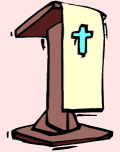Four Corners of the Cross

Here is the 2nd Lenten reading, centred around the Crosslet Cross, kindly passed to us by Rev. David Linde *
This morning we continue our Lenten season reflections on the cross of Jesus Christ. The cross displayed before us today is called the crosslet cross. It consists of a main cross at the centre, with four accompanying crosses pointing in four directions. This symbol is traditionally thought to represent the message of the cross going out to the four corners of the earth. It reminds us today of both the scope of our life in Christ (the four smaller crosses) and the heart of our life in Christ (the central cross).
The work that Jesus did on the cross was truly worldwide. He gave up his life in a violent death on the cross to pay the penalty for the sins of humans across the earth. Predicting his death by crucifixion, his being hoisted up on a Roman cross, he said, "And I, if I am lifted up from the earth, will draw all peoples to Myself" (John 12:32 NKJV). He is the atoning sacrifice, says the Apostle John, for the whole world (1 John 2:2). The glimpse of the heavenly throne room in the book of Revelation features a great throng of people praising Jesus the Lamb: "you were slain, and with your blood you purchased men for God from every tribe and language and people and nation" (Rev. 5:9 NIV). On the cross Christ had his eye on the four corners of the earth.
And if Jesus' work on the cross was worldwide, the mission he gave us is correspondingly worldwide. "The Christ will suffer," he said, "and rise from the dead on the third day, and repentance and forgiveness of sins will be preached in his name to all nations" (Luke 24:46-47 NIV). "Go," he said, "and make disciples of all nations" (Matt. 28:19). Accordingly, the Apostle Paul furnishes us with the pattern for truly apostolic ministry in this age. He wrote, "It has always been my ambition to preach the Gospel where Christ was not known" (Rom. 15:20). So our mission is to the suburbanites of the Twin Cities and the urban street children of Chicago. It is to the Lahu people of Thailand and the Berbers of Algeria; to the 30,000 unreached river villages of the Amazon basin and to the teenagers of Lodz, Poland. From the slums of Kolkata (Calcutta) to the high-rises of Beijing (Peking), our mission is to the four corners.
The crosslet cross reminds us of the scope of things: the work of Christ on the cross was worldwide, and the mission he gave us is worldwide. This cross also shows us the heart of things. At the heart of this worldwide work - as symbolized in this cross - is the message of the cross itself. Our mission is to take to the whole world the message of what the cross is all about: there God himself took the penalty of sinners who had preferred life without him, so that they can now enjoy life with him if they put their trust in his Son, who has been raised from the dead. The Apostle Peter declared, "Christ died for sins once for all, the righteous for the unrighteous, to bring you to God" (1 Pet. 3:18 NIV).
So in this Lenten season, as we approach Easter, is this crosslet cross an emblem of our lives? As we contemplate the purpose of our lives, individually and together, does our vision reach to the frontiers of the Gospel, to the four corners of the earth, to the people groups that still have not heard the message of the cross?
Let us pray:
Jesus our Master, thank you for shedding your blood for us and for other sinners across the world. Expand the scope of our vision, and deepen the burden of our hearts, to embrace the still-unreached peoples of our world.
Amen.
